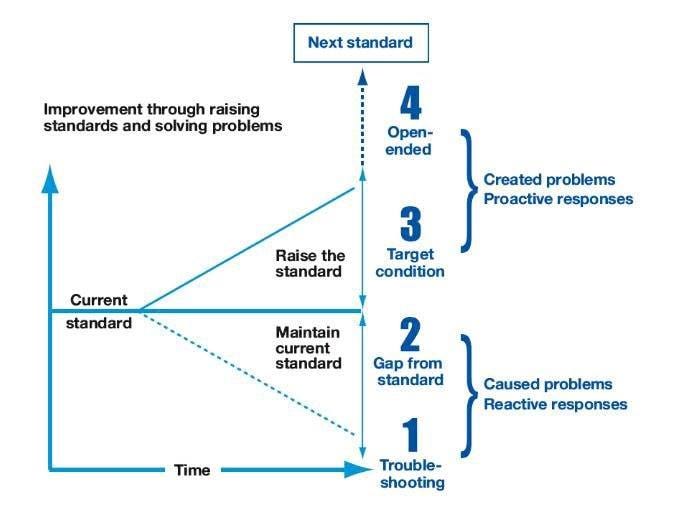How to Approach Problems as a Continuous Improvement Leader
A special thanks to 350 business leaders who subscribed across LinkedIn and Substack last week.
You too can join them by subscribing here to get ONE actionable model to solve problems, make better decisions, and lead with influence - every Friday.
Having no problem is a problem!
However, you should not be treating all problems equally at your work.
Different problems need different ways to approach and resolve, and different levels of effort and resources.
In his book, Art Smalley provides valuable insights for continuous improvement leaders by categorizing the problems that organizations face into four types:
Source: Four Types of Problems by Art Smalley
1) Troubleshooting
Troubleshooting problems are immediate, urgent and require a quick, reactive response to resolve. You should be focusing on identifying the apparent cause and implementing a short-term solution to get things back to normal conditions.
Example: A manufacturing machine suddenly breaks down, halting production. The immediate problem is to identify the cause of the breakdown, such as a worn-out component, and implement a quick fix to get the machine running again.
2) Gap from Standard
These problems arise when there is a deviation from established standards, processes, or performance metrics.
You need to identify the root causes of that deviation. Normally, you can do that through a systematic problem solving approach (e.g., PDCA, DMAIC, 8D, etc.), then implement corrective actions to close the gap and bring performance back to normality.
Example: In a call center, the average call handling time exceeds the established standard of 5 minutes. The problem is the gap between the current performance and the standard. Root cause analysis might reveal that agents lack a specific skill, and corrective actions like additional training or process improvement are needed to meet the standard.
3) Target Condition
It’s about raising the bar, aiming high to achieve new performance levels. You’re not stratified with the status quo.
These problems require a proactive approach, focusing on developing new strategies, processes, or systems to reach the desired outcome.
Example: An e-commerce company wants to improve its on-time delivery performance from 90% to 98%. This is a target condition problem. The organization needs to develop new strategies, like optimizing the supply chain or enhancing order fulfillment processes, to achieve the desired outcome.
This type of problem-solving is often linked to continuous improvement initiatives and may involve innovation, experimentation, and learning.
4) Open-ended
Open-ended problems are complex, ambiguous, and often have multiple potential solutions.
These problems require a creative and innovative approach to problem-solving, as there may not be an obvious or straightforward answer.
Example: An automobile manufacturer is exploring how to transition to electric vehicles (EVs) from traditional combustion engine vehicles. This is an open-ended problem as it involves complex decisions, technological innovation, market research, and significant organizational change. There are multiple potential solutions, and the path forward is not obvious.
Open-ended problems often involve strategic decision-making, long-term planning, and may require significant organizational change.
As a Continuous Improvement Leader, knowing which type of problem you’re facing will help you clarify the capabilities, systems, and mindset required to effectively tackle that problem.
📚 Have you read The "Four Types of Problems"? I highly recommend it for every continuous improvement practitioner.
REFLECTION TIME
Now, let's reflect:
Which type of problem consumes most of your time at work?
After understanding these categories, which type of problem do you think deserves more attention and focus at your company?
DIVE DEEPER
Four Types of Problems by Art Smalley
🚀Subscribe on LinkedIn or Substack to get the weekly newsletter delivered to your inbox.
Every Friday, you’ll get ONE actionable model to solve problems, make better decisions, and lead with influence.
P.S. If you’re enjoying the free newsletter, It’d mean the world to me if you share it with others.
Smart Models just launched, and every single like, comment and share helps.
Thank you!




